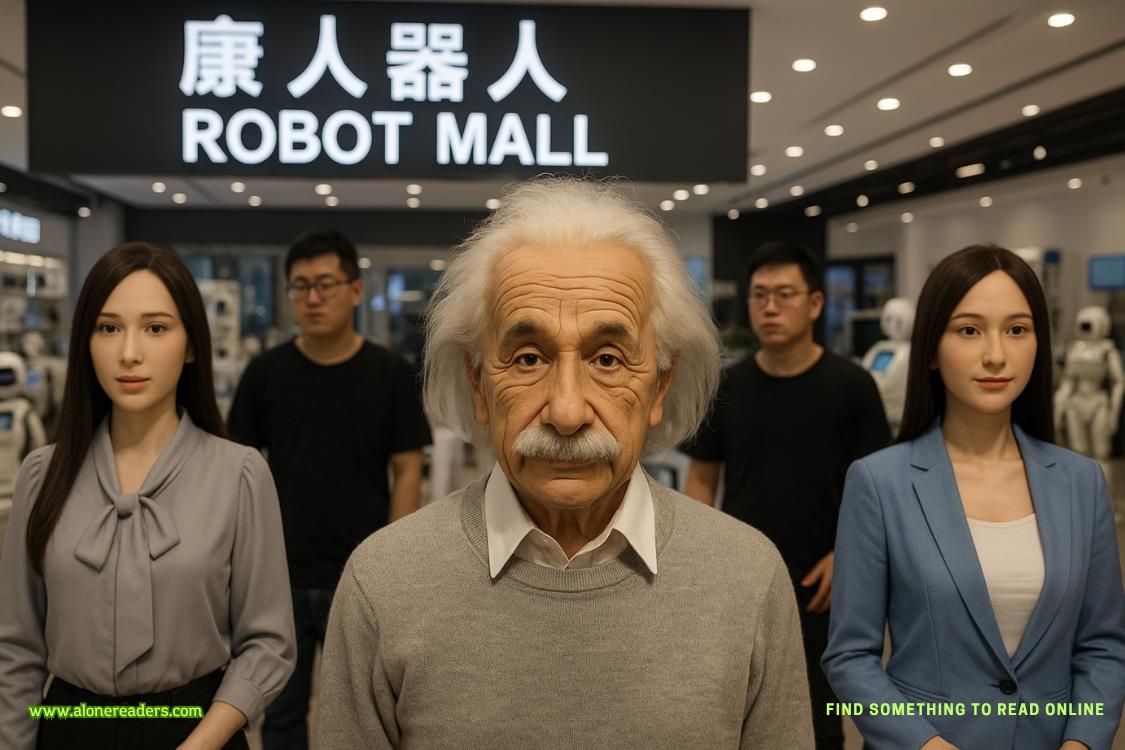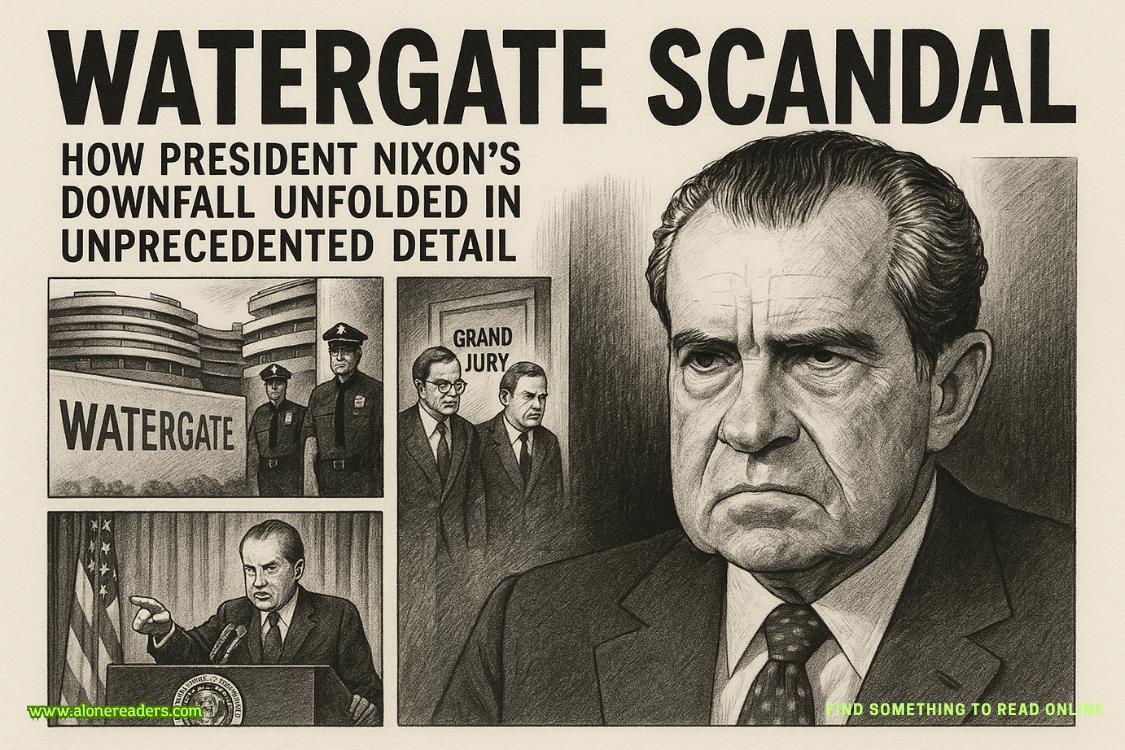Page 54 of The Cabinet of Dr. Leng
“I want to see the machine,” Ferenc said. “Is it here?”
“It’s in the basement,” said Pendergast, and Ferenc could see he was not displeased by the request. “I’ll take you there after our drink.”
“I want to see it now.”
“Excellent.” Pendergast rose just as the woman, Mrs. Trask, came in carrying a tray.
“Mrs. Trask,” Pendergast said, “we’re going down to the basement for a moment. You can leave that for our return.”
Once she left, Pendergast spoke again. “I understand you are afflicted by migraines with aura. My sympathies. Forgive me, but I must ask: are there any specific conditions that trigger an attack? Bright lights, stress, certain foods, lack of sleep?”
“Bright lights aren’t so great. But none of those other things act as precipitators, and in any case my medication keeps things under control.”
“I’m very glad to hear it. Now, if you’d come this way?”
Ferenc followed Pendergast along corridors and down a staircase into a space that was, if anything, even more reminiscent of a horror film: a labyrinth of ancient, stone passageways that branched out in multiple directions. A short walk through dusty spaces brought them to an old door that, he saw, had been recently retrofitted with an electronic keypad and fingerprint scanner. Pendergast tapped in a code on the keypad, then opened the door and turned on the light.
Ferenc could hardly believe his eyes. One half of the room was filled with the burnt, blasted remains of what had once been a machine—a very peculiar machine. It seemed to combine modern computer switches and chips with old-fashioned components like vacuum tubes, semiconductor diodes, crystal oscillators, Fleming valves, transducers: like some nightmare steampunk fantasy. But one thing it obviously wasn’t was random: the various components seemed ganged together in a logical way. This was not some ginned-up fake; it once served a real purpose. But was that purpose actually to pierce the veil of the multiverse?
Gazing at it, he felt a delicious sense of mystery and discovery ahead. It might not have been a time machine, but it had once done something extraordinary.
A trestle table made of soapstone stood alongside the far wall, on which were laid photographs of the machine as it must have originally appeared, as well as half a dozen thick binders, messy with scribbles and Post-it notes.
Pendergast waited for him to take it all in, then spoke. “This device was originally in the basement of an old building in Georgia, where it was ultimately stressed beyond its capabilities—resulting in the damage you see. Every wire, nut, bolt, circuit, and chip has been transported here and arranged in the exact location it was found in Georgia.”
Ferenc nodded. What a jobthatmust have been. Even slivers of shattered glass had been placed on the floor, presumably as found originally.
“Those binders,” Pendergast went on, “contain the notes, operating diagrams, layouts, specs, and everything we could recover associated with the original machine. Your job, Dr. Ferenc, is to restore it to working order. In three weeks or less.”
“Three weeks?” Proctor, he now recalled, had alluded to this.
“Hence my question about how stress, or lack of sleep, might be a concern for you.”
“Why three weeks?”
A silence. “That is a question that falls into my sphere of business. One thing, Dr. Ferenc, must be clarified: Your sphere of business is to get this machine operational again. My sphere of business involves the question ofwhy. That sphere is mine, and mine alone, and no curiosity or inquiries in that direction will be entertained. Are we clear?”
This remark, or more to the point its peremptory nature, annoyed Ferenc. He reminded himself to keep cool, not repeat the mistakes of the past. The thought of the quarter of a million dollars, still cooling off from its transfer to his bank account, helped. “Fine. Enjoy your sphere.”
The faintest fleeting trace of a smile. “Now, then: before dinner is ready, shall we return to the library and worship at the altar of absinthe—chaste acolytes though it may render us?”
Ferenc stepped back. “Lead the way.”
34
December 8, 1880
Saturday
H. P. MUNCK EXAMINED THEdingy cuff of his frock coat, the edge of which was heavily soiled, and plucked off a bit of flesh clinging to the fabric. He flicked it away with a muttered curse in his native Circassian language. He then turned his attention back to his wooden barrow, grasping the handles in his rough hands. The bundle inside the barrow was not heavy, certainly less than six stone. Munck was relieved it had not started ripening. The professor had left the last bundle too long, and in the heat of the Indian summer, in the close air of the tunnels, it had begun to turn. With the coming of December, the tunnels were nearly as cold as winter’s clay, and the professor’s bundles would not turn as quickly. For that, Munck was grateful.
Munck wheeled the barrow along the damp corridor, the wooden wheel creaking with each rotation. At regular intervals, guttering torches set into wrought iron sconces in the brick walls cast feeble yellow light, illuminating the streaks of niter, black mold, and damp that stained the walls. These tunnels lay under what had been a foul alley known as Cow Bay, previously home to an ancient subterranean pumping station dating back to the Collect Pond, during the days of the early Dutch settlers. The waterworks had been shut down and sealed a year ago. This, as the professor had told him, had been a great stroke of good fortune. The professor had had him break through the back wall of a disused coal tunnel that once serviced the building above: Shottum’s Cabinet of Natural Productions and Curiosities, a popular museum of oddities and freaks of nature. That breakthrough gained access to a maze of maintenance tunnels, passageways, and catwalks that had once served the old pumping station, now sealed off from the world above. He had then helped the professor move his laboratory and surgery from the third floor of Shottum’s Cabinet of Curiosities into the reclaimed tunnels.
He turned a corner with the barrow, walking slowly. A cluster of wolf spiders scurried away, their eyes pinpoints of light on the dark walls. Munck ignored them and continued pushing the barrow, turning the final corner. Here he passed through the short tunnel he had excavated connecting the coal tunnel to the waterworks, walls and ceiling freshly bricked and vaulted. Now he entered the old coal tunnel that had originally serviced the boiler for Shottum’s Cabinet. He took a torch from the side of the barrow, raised and lit it from the last sconce in the tunnel, then held it up. The flaring light revealed the straight passageway ahead, arched in stone and brick, old lumps of coal strewn along its length. Both sides of the tunnel held a series of arched niches, about three feet across and five high, half of which were crudely bricked up. Water glistened on the walls, and he heard a faint, irregular chorus of drips. Otherwise, all was still.
He took another step, pushing the barrow with one hand while holding the torch in the other, and stopped alongside an unbricked alcove. Here, on the tunnel floor, lay a stack of bricks, a bucket of water, a mixing trough, a burlap bag of mortar, a trowel, and a mortar hoe.
Holding the torch before him, he illuminated the interior of the niche. Two bodies were folded inside, shrouded by surgeon’s sheets, stiffened by the stains that had crept through before drying. The rats had gotten to them—they always did, Munck thought—and chewed through the shrouds in a number of places. One large piece had fallen away to reveal the decomposing remnants of an arm and shoulder, the purple flesh falling from the bones, a bit of rotted lace from the cuff still circling the wrist.















